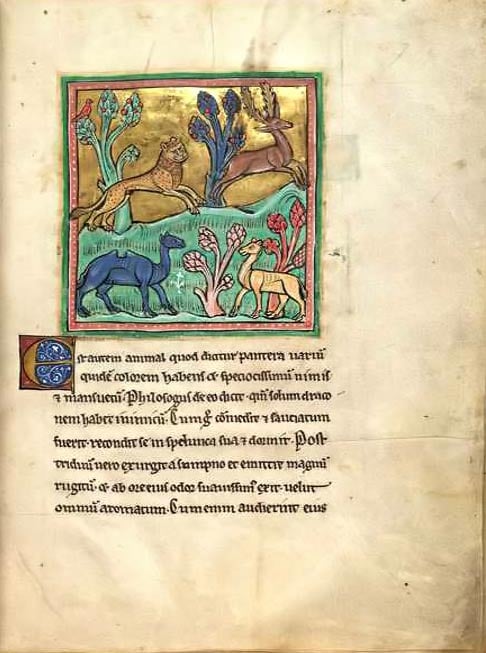
During the Middle Ages the phoenix rose from its ashes to be reborn, dangerous dragons battled elephants to the death, and the pelican tore out its own breast to feed its young with its life’s blood—at least, these were the vividly illustrated lessons found in ancient bestiaries.
A bestiary, or Bestarium vocabulum is a book of beasts. Rich, decorative images illuminated in gold and silver showcased a compendium of living animals and birds, rare and common, and mythological creatures, benign and dangerous. These illustrated volumes, popular throughout North Africa, the Middle East and especially Europe during the 12th century, not only contained observations on the natural world, but also imparted a moral lesson to medieval readers.

The Leopard, from the 13th-century bestiary known as the "Rochester Bestiary. (Public Domain)
According to David Badke’s The Medieval Bestiary, the Middle Ages was an intensely religious time, and it was believed in the Christian west that the animal kingdom and the natural world had been set down by god to provide instruction to humanity. In this view, humans were felt to be within nature, but apart from it. “Animals were said to have the characteristics they do not merely by accident; God created them with those characteristics to serve as examples for proper conduct and to reinforce the teachings of the Bible.”